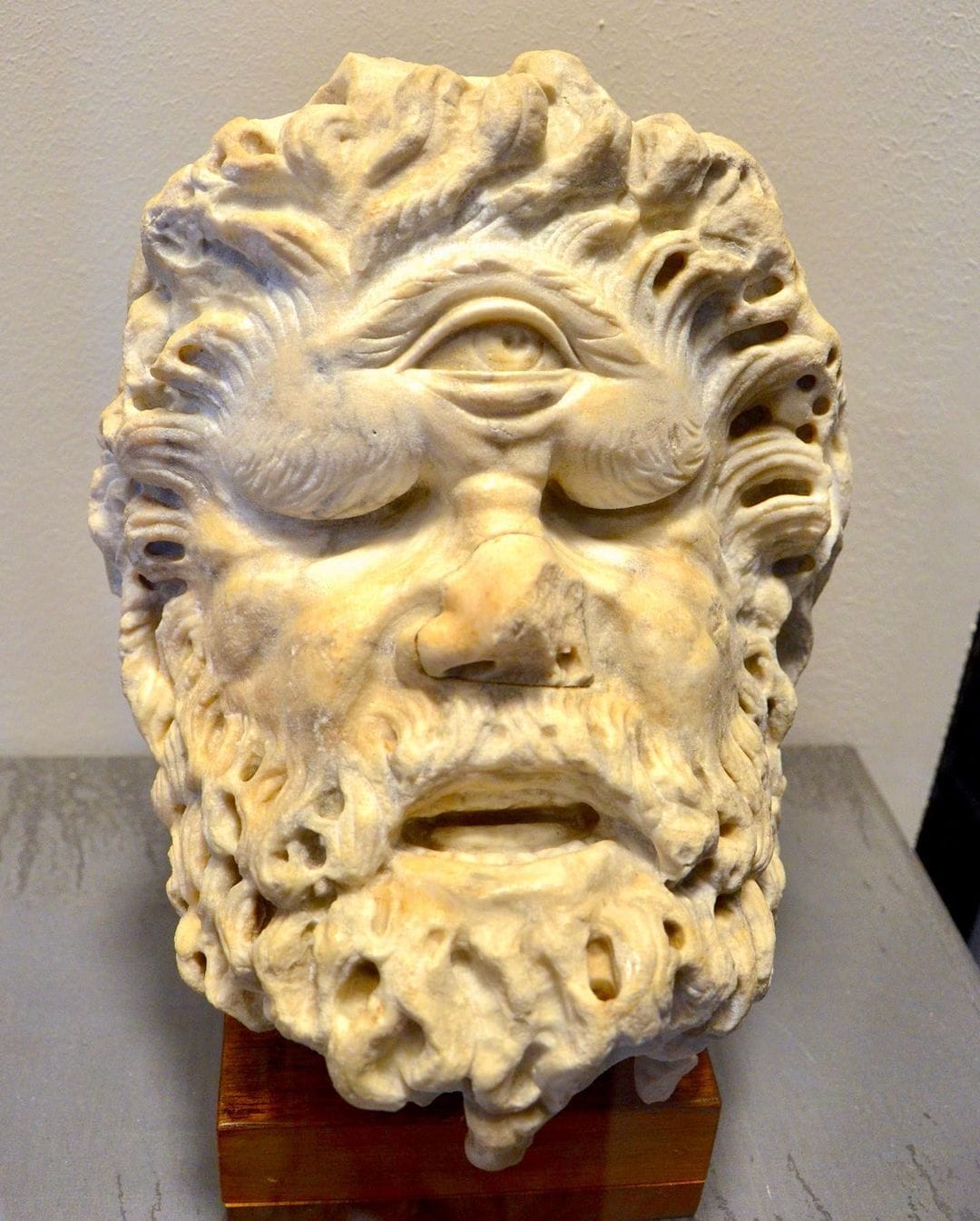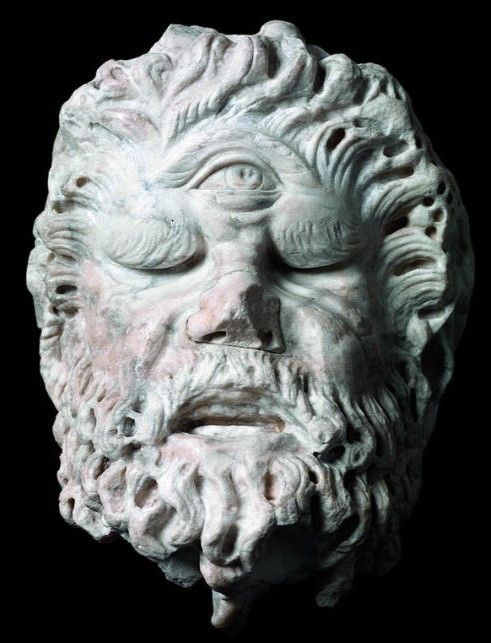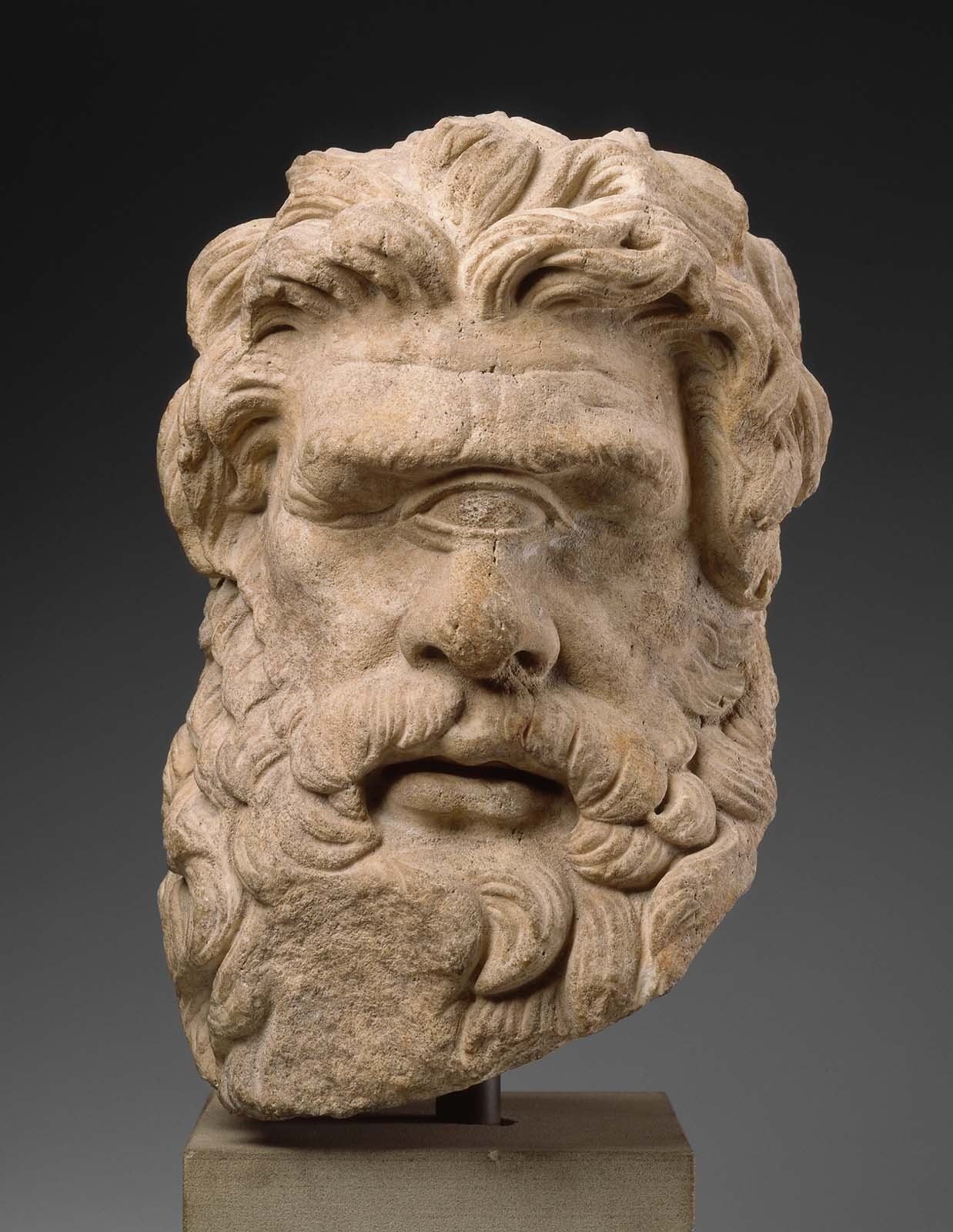Discovering Roman Marble Head of Polyphemus

Nestled within the esteemed Musei Reali of Torino resides a captivating relic from ancient mythology: the Roman marble head of Polyphemus, a colossal figure from the epic tales of Homer’s Odyssey. Crafted between 50-100 AD, this remarkable sculpture immortalizes Polyphemus, the man-eating kyklops (cyclops) giant known for his singular, orb-shaped eye set prominently in the center of his forehead.

Polyphemus, a central figure in Greek mythology, encountered the cunning hero Odysseus during his arduous journey home from the Trojan War. According to legend, Odysseus and his men sought refuge in Polyphemus’ cave, only to find themselves trapped by the towering giant. Desperate to escape the clutches of this formidable creature, Odysseus devised a cunning plan: he plied Polyphemus with wine, and as the giant succumbed to a drunken slumber, Odysseus and his men drove a burning stake into Polyphemus’ single eye, blinding him.
The Roman marble head of Polyphemus at Musei Reali of Torino captures the essence of this legendary encounter with striking realism and artistic finesse. The sculpture portrays Polyphemus with a rugged and imposing visage, his brow furrowed in agony and fury as he grapples with the pain of his inflicted wound. The mastery of the sculptor is evident in the intricately carved details—the deep-set eye socket, the powerful contours of the face, and the expressive features that convey the giant’s primal emotions and unyielding strength.

Polyphemus’ narrative does not end with his blinding; enraged and vengeful, he attempted to thwart Odysseus’ escape by hurling massive boulders at the hero’s departing ship. Despite his efforts, Polyphemus ultimately failed to prevent Odysseus’ flight to safety. In a final act of desperation, the wounded giant beseeched his father, Poseidon, the god of the sea, to exact revenge on Odysseus for his grievous injury—a plea that would set in motion further trials and tribulations for the hero on his epic voyage home.
The significance of the Roman marble head of Polyphemus extends beyond its artistic merit. It serves as a poignant reminder of the enduring power of ancient mythology to captivate and inspire, resonating with themes of heroism, cunning, and the timeless struggle between mortal ambition and divine retribution. Through its preservation and display at Musei Reali of Torino, this sculpture continues to intrigue and educate audiences about the rich tapestry of Greek mythology and its profound influence on Western culture and storytelling.

Visitors to Musei Reali of Torino are afforded a rare opportunity to encounter Polyphemus in all his mythic glory—an encounter that invites reflection on the complexities of human nature, the triumphs and tragedies of ancient heroes, and the enduring allure of mythical tales passed down through generations. As the marble head of Polyphemus gazes stoically into the ages, it beckons us to delve deeper into the labyrinthine realms of myth and imagination, where gods and giants, heroes and monsters, continue to shape the narratives of our collective imagination.